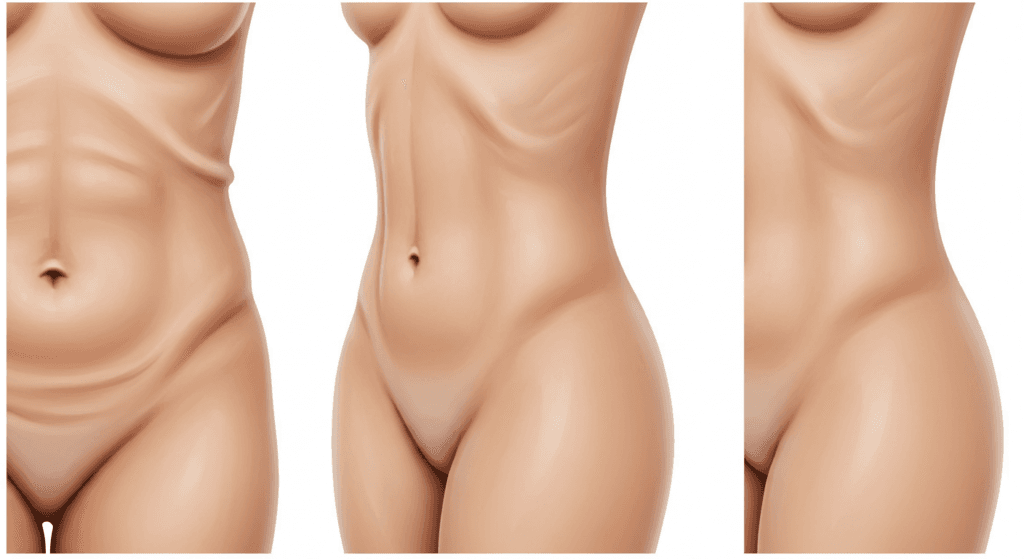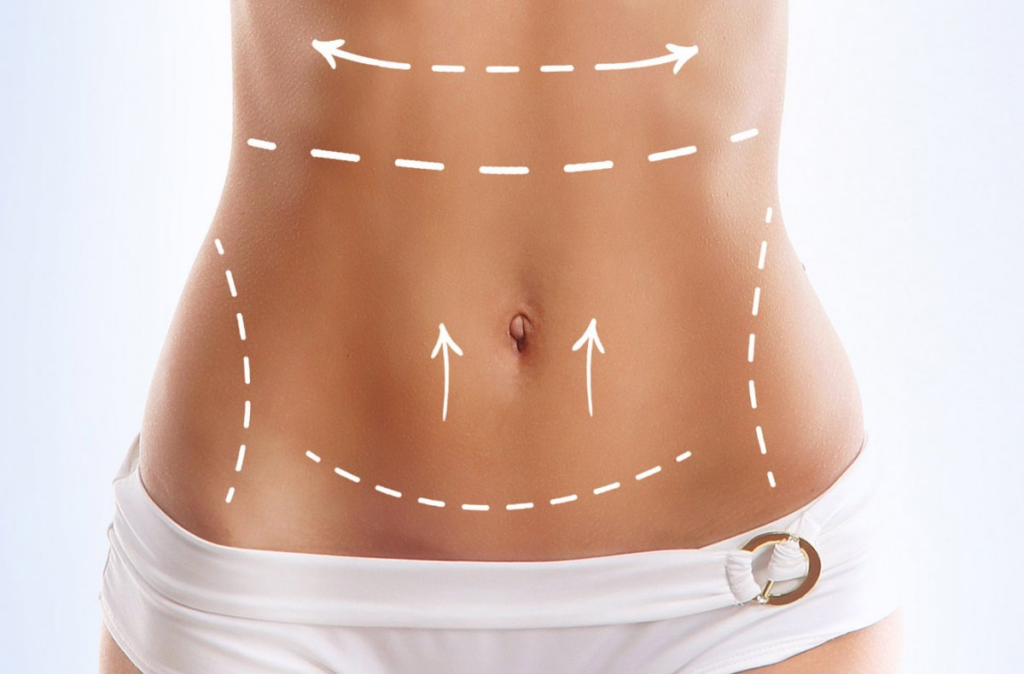Abdominal muscle separation, or diastasis recti, is a common condition affecting many individuals, particularly postpartum women. While often perceived as a purely cosmetic concern, diastasis recti can lead to discomfort, back pain, and a weakened core. A tummy tuck, also known as abdominoplasty, offers a surgical solution to address both aesthetic concerns and the underlying muscle separation. This article explores the combination of tummy tuck surgery with muscle repair to effectively treat diastasis recti, outlining the procedure, recovery, and long-term outcomes.

Table of Contents
Understanding Diastasis Recti
Diastasis recti occurs when the rectus abdominis muscles, the “six-pack” muscles, separate at the midline, creating a gap. This separation is often caused by pregnancy, rapid weight gain or loss, or intense physical activity. The degree of separation can vary, ranging from a slight widening to a significant gap. Symptoms can include a bulging abdomen, lower back pain, poor posture, and difficulty with activities requiring core strength. Many women experience diastasis recti after childbirth due to the stretching of abdominal muscles during pregnancy to accommodate the growing fetus.
The diagnosis of diastasis recti is typically made through a physical examination. A healthcare professional will assess the width of the separation by palpating the abdominal wall. Imaging techniques such as ultrasound may be used in some cases to confirm the diagnosis and measure the extent of the separation. Non-surgical treatments, such as physical therapy and core strengthening exercises, can be effective for mild cases. However, for more severe cases or when conservative treatments fail to provide adequate improvement, surgery may be considered.
While diastasis recti is often associated with pregnancy, it’s important to note that it can affect individuals who have not been pregnant. Factors such as genetics, connective tissue disorders, and chronic coughing can also contribute to the development of diastasis recti. Understanding the underlying causes is crucial for developing an appropriate treatment plan. Ignoring diastasis recti can lead to long-term complications, including chronic back pain, pelvic floor dysfunction, and reduced abdominal strength.
The severity of diastasis recti significantly impacts the choice of treatment. Mild cases may respond well to conservative management, while more severe separations may require surgical intervention for optimal correction. Consulting with a healthcare professional is essential to determine the best course of action based on individual circumstances and the extent of muscle separation.

The Tummy Tuck Procedure
A tummy tuck, or abdominoplasty, is a surgical procedure designed to remove excess skin and fat from the abdomen, tightening the underlying muscles and creating a flatter, more toned appearance. The procedure typically involves an incision made across the lower abdomen, allowing the surgeon to access and reposition the abdominal muscles. Excess skin and fat are then removed, and the remaining skin is pulled taut and sutured into place.
The length and location of the incision vary depending on the extent of the correction needed. In some cases, a smaller incision may be sufficient, while in others, a longer incision may be required to achieve optimal results. The procedure can be combined with liposuction to further refine the abdominal contour. Liposuction helps remove stubborn fat deposits that are resistant to diet and exercise.
The tummy tuck procedure is typically performed under general anesthesia. The duration of the surgery varies depending on the complexity of the case and the extent of the correction required. Patients are usually required to stay in the hospital for a short period after the surgery for observation and pain management. Post-operative care involves wearing a compression garment to minimize swelling and support the healing process.
The choice of anesthesia, the specific surgical techniques employed, and the post-operative care plan are all carefully tailored to the individual patient’s needs and medical history. A thorough consultation with a qualified plastic surgeon is crucial to discuss the risks, benefits, and potential complications associated with the procedure.
Muscle Repair & Diastasis Recti
During a tummy tuck procedure, the surgeon can simultaneously address diastasis recti by repairing the separated abdominal muscles. This involves reapproximating, or bringing back together, the rectus abdominis muscles at the midline. This repair helps restore abdominal strength and improve core stability. The technique used for muscle repair depends on the severity of the diastasis and the surgeon’s preference.
Several surgical techniques can be used to repair the separated muscles. These may involve sutures, mesh reinforcement, or a combination of both. Sutures are used to stitch the muscles back together, while mesh can provide additional support and help prevent recurrence. The choice of technique is determined based on the individual patient’s anatomy and the extent of muscle separation.
The muscle repair component of the tummy tuck is crucial for achieving long-term results and improving functional outcomes. Simply removing excess skin and fat without addressing the underlying muscle separation may not provide satisfactory results and could even lead to recurrence of the abdominal bulge. Therefore, combining muscle repair with the tummy tuck is often recommended for patients with diastasis recti.
The success of muscle repair depends on several factors, including the surgeon’s skill, the patient’s adherence to post-operative instructions, and the severity of the diastasis. Post-operative physical therapy is often recommended to help strengthen the abdominal muscles and improve core stability. This helps to ensure the long-term success of the muscle repair and minimizes the risk of recurrence.

Recovery and Long-Term Results
Recovery from a tummy tuck with muscle repair typically involves several weeks of downtime. Patients can expect some discomfort, swelling, and bruising in the initial days following the surgery. Pain medication is usually prescribed to manage discomfort. A compression garment is worn to minimize swelling and support the healing process. Gradual return to normal activities is recommended, with strenuous exercise avoided for several weeks.
Post-operative appointments are scheduled to monitor healing progress and address any concerns. Physical therapy is often recommended to help strengthen the abdominal muscles and improve core stability. This is particularly important for patients who have undergone muscle repair for diastasis recti. The physical therapist will guide the patient through a tailored exercise program to gradually increase strength and improve functional outcomes.
Long-term results of a tummy tuck with muscle repair are generally positive. Patients can expect a significant improvement in abdominal contour and a reduction in the appearance of diastasis recti. The muscle repair helps restore abdominal strength and improve core stability, leading to improved posture and reduced back pain. However, maintaining a healthy lifestyle, including a balanced diet and regular exercise, is crucial for preserving the long-term results.
Individual results may vary, and it’s important to have realistic expectations. While the surgery can significantly improve the appearance and function of the abdomen, it’s not a guaranteed solution for all individuals. Maintaining a healthy weight and engaging in regular exercise after surgery are essential for maximizing the long-term benefits and minimizing the risk of recurrence.
A tummy tuck with muscle repair offers a comprehensive solution for individuals seeking to address both cosmetic concerns and the functional limitations associated with diastasis recti. While the procedure requires a commitment to recovery and post-operative care, the long-term benefits, including improved abdominal contour, core strength, and reduced back pain, can significantly enhance quality of life. It’s crucial to consult with a qualified plastic surgeon to determine if this procedure is the right option and to discuss the potential risks and benefits. Remember that individual results may vary, and maintaining a healthy lifestyle is essential for achieving and maintaining optimal outcomes.

Transform Your Confidence with Surgyteam!
Join the thousands of satisfied patients who have experienced the exceptional care and expertise of Surgyteam’s renowned plastic surgeons. Whether you’re seeking aesthetic enhancements or reconstructive surgery, our dedicated team in Antalya is here to provide you with the highest quality treatment and personalized care.



